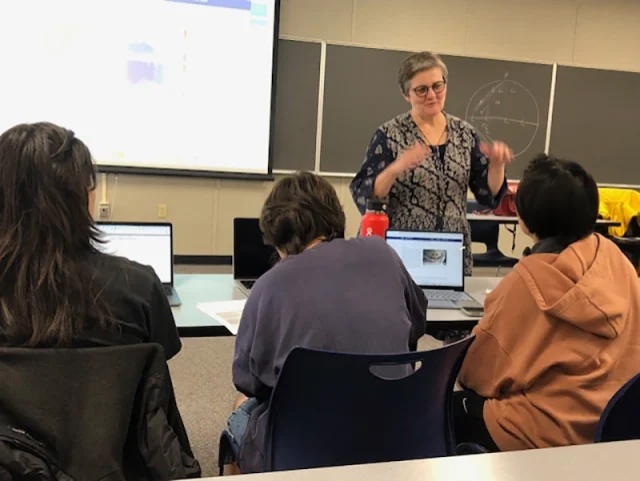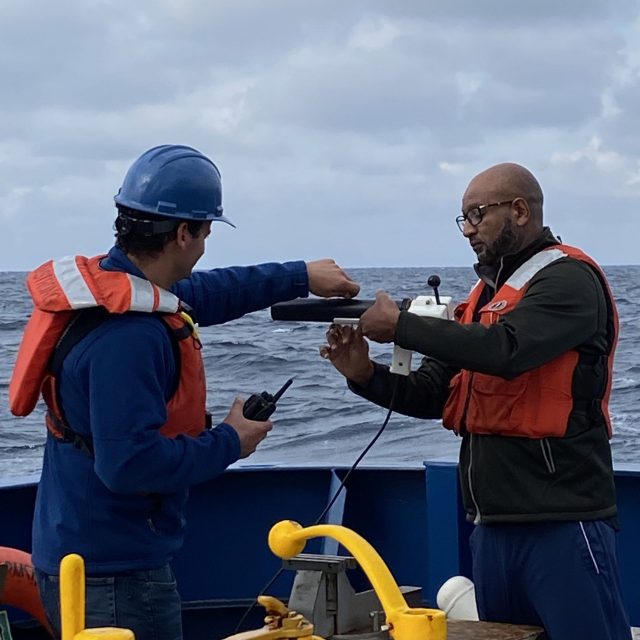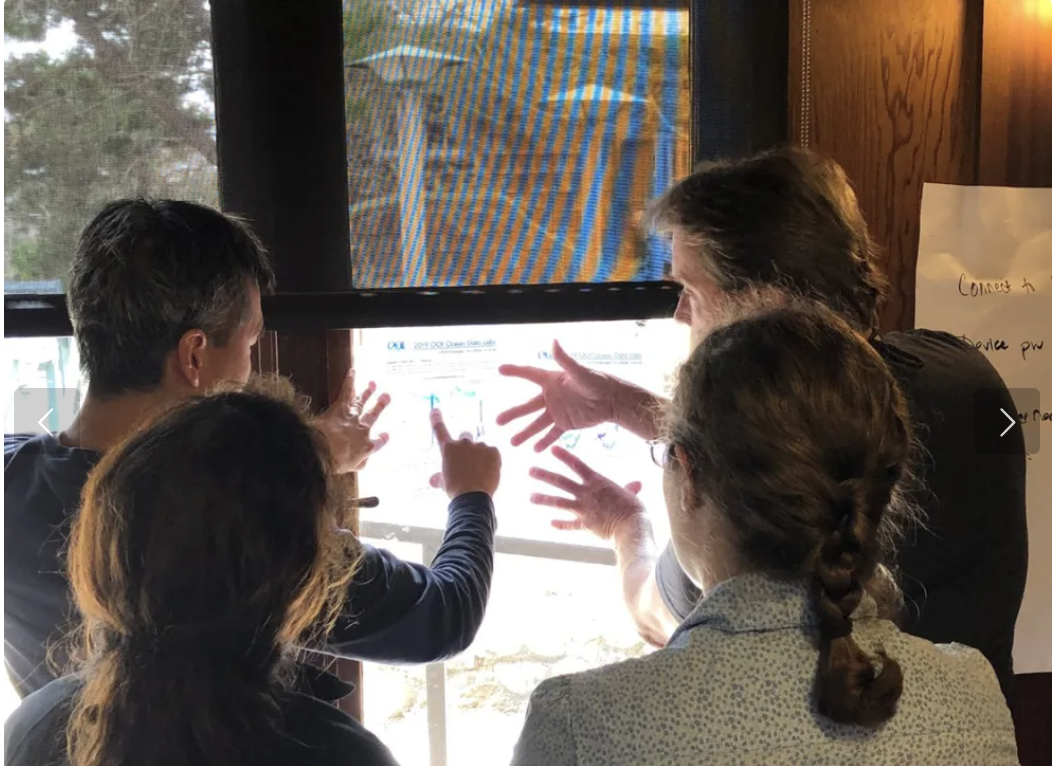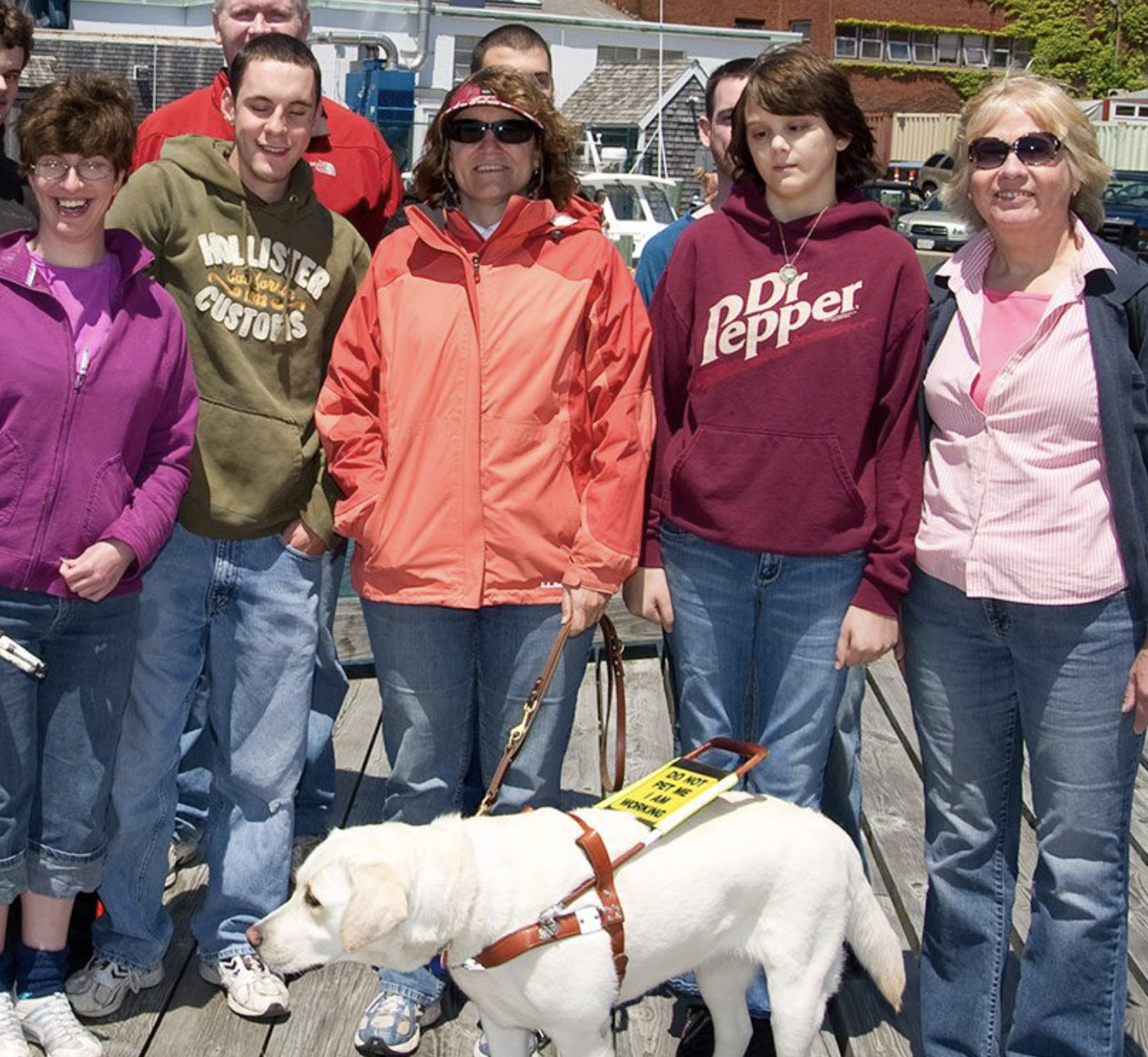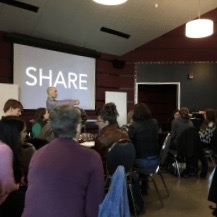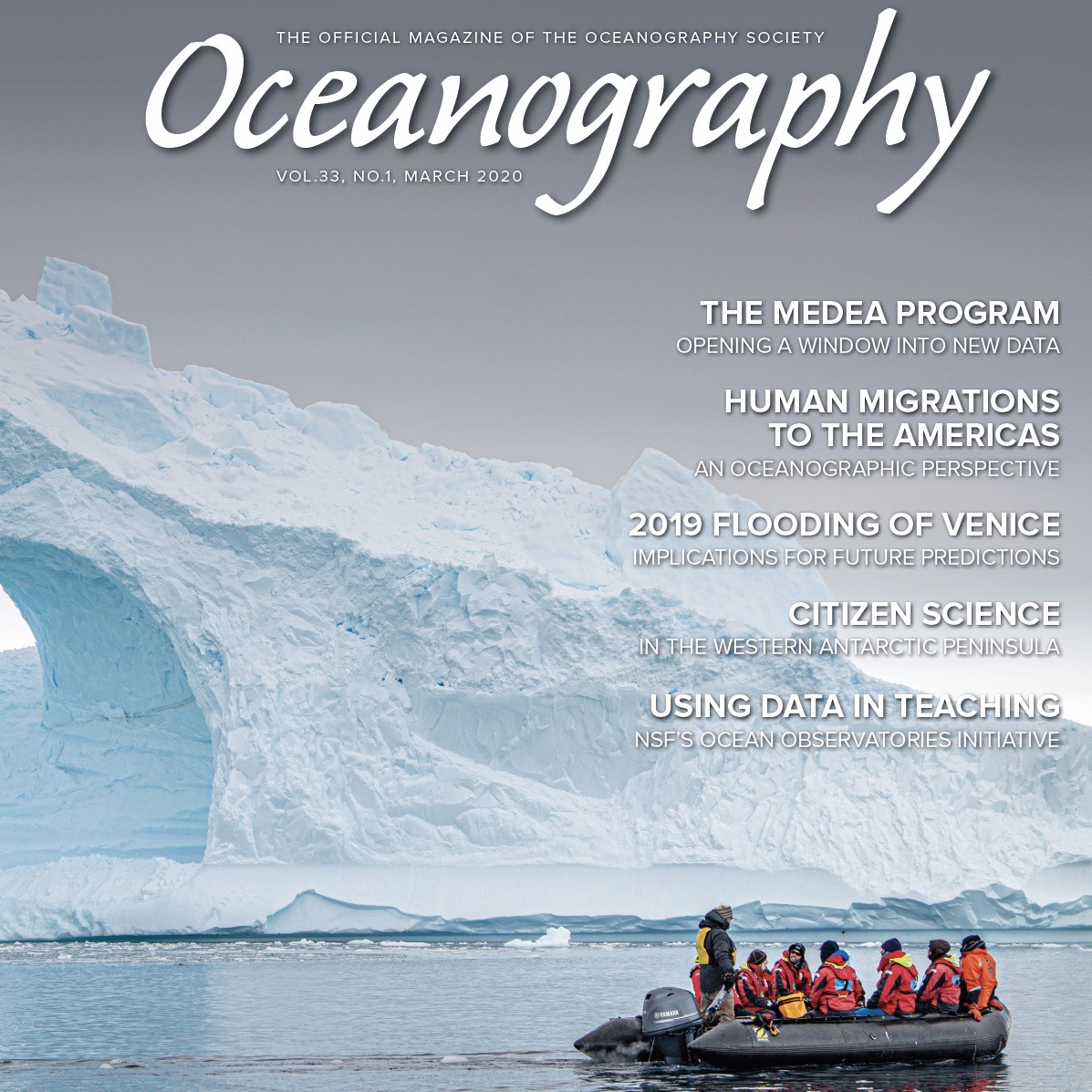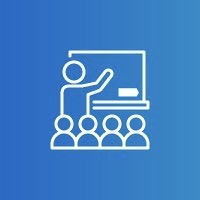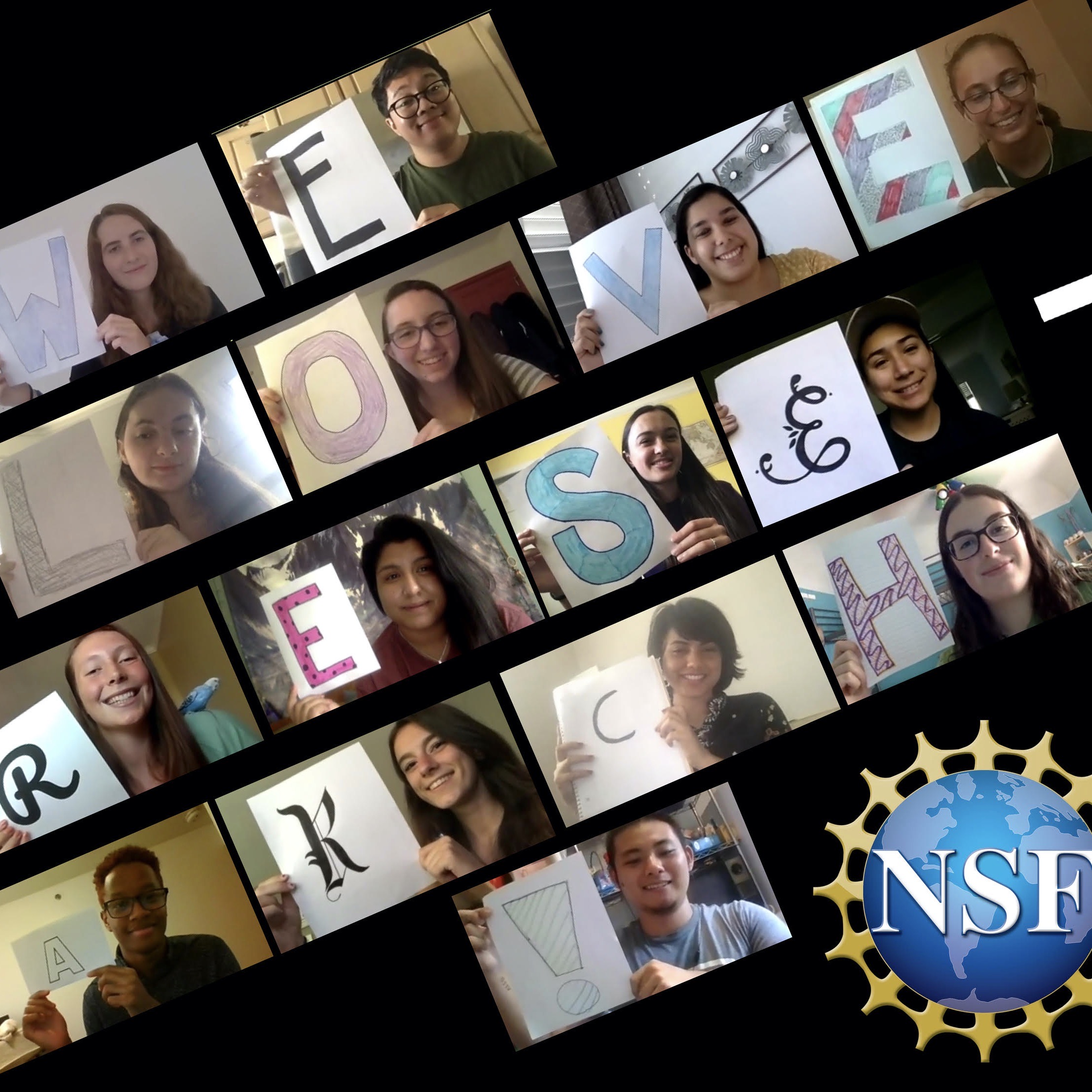Posts Tagged ‘Ocean Data Labs’
Communicating with Colleagues Teaching with OOI Data
The Ocean Observatories Initiative (OOI) and the OOI Ocean Data Labs are serious collaborators. While two different NSF-funded initiatives share portions of their names, their roles are different, but complementary. The OOI provides data that the OOI Ocean Data Labs Project uses to prepare instructional materials for undergraduate classrooms. It’s a collaboration that helps to expand the use of OOI data into classrooms and into the hands of potential future researchers.
To honor this collaboration, the OOI has launched a new Discourse forum “OOI in the Classroom“ where educators can share their experiences teaching with OOI data and establish dialogues with their colleagues. This forum is designed to offer an online area to share ideas, tell tales, and work to develop supportive, instructive, and challenging classroom experiences.
The OOI Ocean Data Labs also hosted an in-person workshop at the recent Ocean Sciences Meeting to introduce faculty to the community-developed collection of OOI Data Explorations and the online OOI Lab Manual. The workshop invited participants to integrate OOI data into undergraduate courses (Greengrove et al., 2020), to not only teach concepts in oceanography but to build transferable skills.
The Ocean Data Labs is holding a workshop (June 2-5, 2024 at the Marine Science Center, University of North Carolina Wilmington) that will focus on the relocation of the Pioneer Array to the Mid-Atlantic Bight, and the potential this move will provide for future educational lessons and student research activities. Learn more and apply to attend. Participants will be selected and notified by mid-April.
Another way to get involved is to join the Ocean Data Labs mailing list to learn of the latest innovations and lesson plans developed by this network of educators. Also, be sure to sign on to Discourse to continue the ongoing conversation within the education network of OOI data users.
Read MoreOOI Data Labs Workshop at OSM24
On Wednesday, February 21st, the Ocean Data Labs will host a “mini” workshop for professors interested in learning about the Ocean Observatories Initiative (OOI) and how they can utilize OOI data to support the teaching of oceanographic concepts and data literacy to undergraduate students.
Read MoreOOI Data Classroom at Sea
Ocean Data Labs researcher Sage Lichtenwalner took his data capabilities to the waves, so to speak, as he shared how Ocean Observatories Initiative (OOI) data can be used in the classroom with researchers and teachers aboard the R/V Neil Armstrong in early January. The OOI is funded by the National Science Foundation to collect ocean observations from five scientifically important sites in both the Atlantic and Pacific and make the data available over the internet for research and education.
Lichtenwalner, a research programmer at Rutgers University, was asked to join the cruise as part of an effort to build partnerships and future opportunities between STEMSEAS (Science, Technology, Engineering and Math Student Experiences Aboard Ships) and several Historically Black Colleges and Universities (HBCUs). The cruise was designed to align with STEMSEAS’ objectives and be both immersive and experiential for 12 participants from ten institutions, including six HCBUs. The idea was for faculty to experience the cruise as students on other STEMSEAS expeditions do, and to take back what they learned from their onboard experiences to share with their students and classes. They traveled from Woods Hole, MA to Pensacola, Fla., from January 3-11, 2023.
Lichtenwalner provided participants with practical, hands-on ways to integrate OOI data into their courses. During the eight-day cruise, Lichtenwalner gave four presentations to the group, including a demonstration about how they can use the OOI Data Labs Manual in their classes. “The OOI Data Labs Manual is an easy, accessible way to use real ocean data to teach oceanographic concepts,” he said. “Educators have found that the real-time nature of OOI data inspires students, making them more engaged with the data because of their timeliness and relevance.”
Lichtenwalner’s presentations were part of a series of talks given by the STEMSEAS team and HBCU participants, which included hands-on activities and resources to build students’ problem-solving and scientific thinking skills. Participants also shared their research and teaching strategies to foster collaborative discussions.
[media-caption path="/wp-content/uploads/2023/01/group-shot.png" link="#"]Spending eight days at sea together provided participants with plenty of hands-on learning about sampling at sea, as well as opportunities to share research and teaching strategies they use when on land.[/media-caption]
Onboard the R/V Neil Armstrong, Dr. Magdalena Andres, a physical oceanographer at Woods Hole Oceanographic Institution and co-Principal Investigator of the PEACH program, which is investigating physical processes that drive exchanges between the shelf and deep ocean at Cape Hatteras, served as chief scientist on the cruise. She put the visiting team to work, helping deploy instruments and make underway measurements as part of the “SWOT Adopt a Crossover Field Campaign—Cape Hatteras.” The project, funded by NASA’s Jet Propulsion Laboratory, falls under the umbrella of the Surface Water Ocean Topography (SWOT) Adopt a Crossover Consortium. Andres is part of a multi-institution research team that has “adopted” the site east of Cape Hatteras near the OOI Mid-Atlantic Bite array site, both to advance the community’s dynamical understanding of this key oceanographic region and to help validate measurements provided by the SWOT satellite which launched in December 2022. “SWOT promises to revolutionize our understanding of earth’s surface water. It’s exciting to have the STEMSEAS, HBCU, and Ocean Data Labs participants working side-by-side with the project’s scientists, engineers, students, and technicians on this forefront of ocean observing,” explained Andres.
[media-caption path="/wp-content/uploads/2023/01/IMG_5670-2-scaled.jpeg" link="#"]Loretta Williams Gurnell (right), founder of the SUPERGirls SHINE Foundation, is learning about atmospheric turbulence with a hands-on demonstration led by Dr. Alex Gonzalez from the Physical Oceanography department at the Woods Hole Oceanographic Institution. Alex is part of the NSF-supported DIYnamics Team, https://diynamics.github.io/pages/about.html, which is working to provide access to affordable materials for geoscience teaching demonstrations.[/media-caption]
While onboard, Andres had the team assist her in deploying current and pressure sensing inverted echo sounders (CPIESs) and XBTs (expendable bathythermographs), as well as collecting measurements with the ship’s CTD (conductivity, temperature, depth) profiler. CTDs measure vertical profiles of conductivity (a proxy for salinity) and temperature. XBTs collect profiles of temperature. CPIESs measure bottom pressure and vertical acoustic travel time data (a proxy for temperature and salinity profiles) and near bottom current measurements (velocity of ocean water). The CPIESs were left in place to collect data over the next 18 months.
In 2024, the OOI Pioneer Array will move to the Mid-Atlantic, not far from where the cruise deployed the CPIES and collected CTD casts. To prepare participants for future potential educational applications of OOI CTDs and other instruments in the area, Lichtenwalner made quick plots of the data collected along the way. “Doing real-time plotting to support operations is actually how I got started in oceanography, so it’s been fun to re-live that experience, while also introducing a new group of professors and educators to the power of using ocean data in real-life and in the classroom.”
Read More
Funding Opportunity for OOI Education, Workshops, Training Proposals
To encourage wider use of OOI data by researchers and educators, the Ocean Sciences Division (OCE) of the National Science Foundation is seeking proposals for projects that use OOI data. Funding is available to support workshops, conferences or other training events that introduce researchers and educators to the type of data available through OOI and community tools that have been developed to use that data.
A Dear Colleague Letter (NSF20-047) issued in early 2020 remains in effect.
“We are seeking to support efforts that teach researchers or educators how to use OOI data and tools, that develop additional tools or instructional materials using OOI data or that serve to create communities of practice to use OOI data for multi-investigator, community-driven research, “ said Elizabeth Rom, an OCE Program Director who oversees a number of NSF educational initiatives.
At a recent town hall of the Ocean Observatories Initiative Facility Board at the AGU Fall Meeting, Rom presented a progress report on proposals funded since May 2020. These include:
- Two Ocean Hack weeks held at the University of Washington and Bigelow Laboratory for Ocean Sciences. In 2020, the workshop was virtual, in 2021 the workshop was a hybrid.
- OOI Biogeochemical Data Workshop, which consisted of an online meeting in July 2021 and plans for an in-person meeting for June 2022 at Woods Hole Oceanographic Institution.
- K12 OOI Workshop Series that involves the South Kitsap School District in Washington state and Deb Kelley at the University of Washington. The goals of the workshop series are to develop teacher cohort and lesson plans using OOI data in classrooms. The series launched in early December with virtual and in-person sessions planned throughout 2022.
She also reported on progress in course development, including support of a second cohort of faculty to develop version 2 of the Ocean Data Lab’s online manual, microbial monitoring using OOI RCA remote samplers at Axial Seamount, and development of instructional materials and piloting assessment instruments to explore undergraduate scientific literacy. NSF programs GeoPaths (Pathways into the Earth, Ocean, Polar and Atmospheric and Geospace Sciences) and Research Experiences for Undergraduates (REU) sites also provided opportunities for using OOI data. An initiative to broaden the scope and increase the efficacy of the SERC Discovery System was supported, as were multiple REU student projects in 2020 and 2021.
“While COVID served to discourage in-person meetings and workshops, we were pleased that so many innovative approaches were proposed,” added Rom. “Hopefully in 2022, we will have opportunities to for virtual, hybrid and in-person workshops, and certainly the innovation of this community will shine through.”
Two- and four-year U.S. institutions of higher education and U.S. non-profit non-academic organizations are eligible to submit proposals. Proposals may be submitted at any time, but Principal Investigators are encouraged to submit at least six months prior to the planned event. Submission details are available here. While the DCL refers to Fiscal Year 2020, it continues to be in effect until canceled.
Read MoreOcean Data Lab Nuggets Providing Foundation for Accessible Oceans
Ocean Data Labs Tutorial at WHOI Available Online
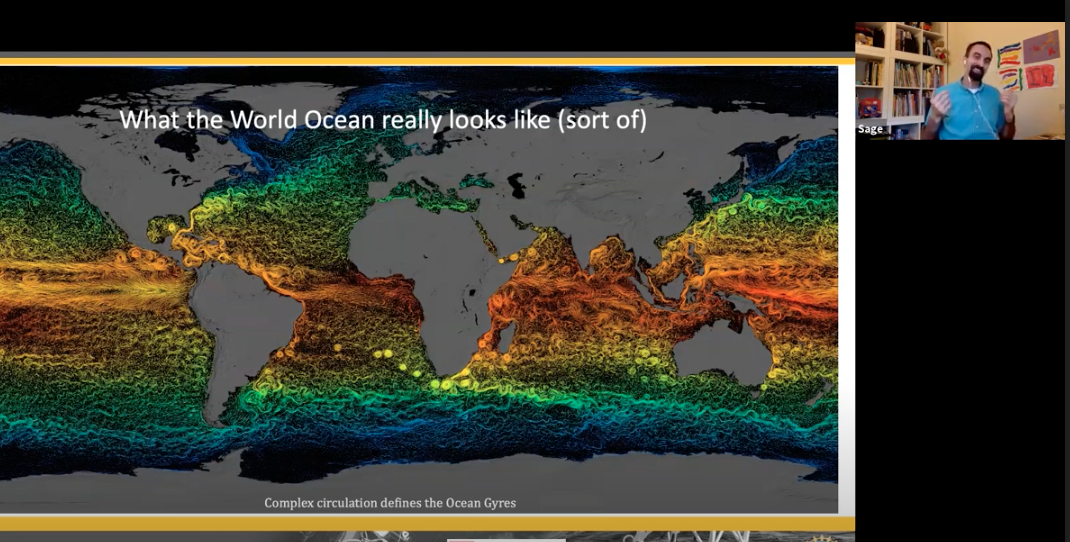 The Zoom screen was full as 40 people participated in the third of Woods Hole Oceanographic Institution’s (WHOI) Data Science Summer Series on 4 August 2020. Research Programmer Dr. Sage Lichtenwalner, of Rutgers, the State University of New Jersey, who helped design and implement the Ocean Observatories Initiative (OOI) Ocean Data Labs, presented.
The Zoom screen was full as 40 people participated in the third of Woods Hole Oceanographic Institution’s (WHOI) Data Science Summer Series on 4 August 2020. Research Programmer Dr. Sage Lichtenwalner, of Rutgers, the State University of New Jersey, who helped design and implement the Ocean Observatories Initiative (OOI) Ocean Data Labs, presented.
Lichtenwalner gave an overview of the many resources available through the Ocean Data Labs project, which is developing, testing, refining, and disseminating easy-to-use, interactive Data Explorations and Data Lab Notebooks for use in the classroom. Entertaining and information, the hour-long presentation flew by as Lichtenwalner presented tricks and tips to downloading OOI data, how to use OOI data in python and other computing platforms such as the Google Colab interface, and ended with a demonstration visualization of OOI data collected by its Pioneer Array. The complete webinar can be viewed here.
Dr. Stace Beaulieu, a senior research specialist in Biology and coordinator of WHOI’s Ocean Informatics Working Group, planned and hosted the session.
Read More
Ocean Data Labs Webinar 16 September
On 16 September at 4 pm Eastern, Ocean Data Labs will kick off it fall webinar series: Ocean Data Labs Plus, a webinar series for Community College and University Professors teaching oceanography or geosciences courses. The series opener will be “New You Can Use,” hosted by the OOI Data Labs Project Team and special guests.
The webinar will explore how the Data Labs Project can support your efforts to introduce big data into your undergraduate courses. Join the Team to find out about newly-developed interactive online data-focused activities that are grounded in learning science – and consider how to effectively incorporate them into your courses. Check out the Ocean Data Lab’s online collection of data explorations and data nuggets in advance, and bring your questions and ideas. Each webinar will last about 60-75 minutes and is meant to be more of an interactive discussion.
Register: https://rutgers.zoom.us/meeting/register/tJApfuGoqjItGtbfEBMLQFf9MNkZTDCVGUdp
Read More
Invitation to Integrate OOI Data into Teaching
In the March 2020 issue of Oceanography, a group of authors issued an invitation to undergraduate classroom instructors to integrate OOI data into their classrooms.
Abstract
There are many benefits to using real data in undergraduate science education, including building analytical and problem-solving skills and visualizing concepts through real-world examples. The Ocean Observatories Initiative (OOI) provides a unique source of continuous, long-term oceanographic data from multiple locations in the world ocean. Each of these arrays hosts a suite of co-located instruments that measure physical, chemical, geological, and biological properties. Existing educational resources derived from OOI data can be leveraged for undergraduate teaching activities in and beyond the classroom. We provide example applications of the use of OOI resources in lesson plans and in research experiences for undergraduates. There are also abundant opportunities for new resources to be developed by the community. Our goal is to guide educators in determining appropriate OOI data sets and applications for their own needs.
Read the complete article Using Authentic Data from NSF’s Ocean Observatories Initiative in Undergraduate Teaching: An Invitation here.
Read MoreOpportunity to Test OOI Data Lab Notebooks
The OOI Ocean Data Labs team is looking for instructors of introductory oceanography courses to “test drive” a collection of new online laboratories that focus on important oceanographic themes and topics using OOI data.
They are seeking a pilot implementation team of 14-16 faculty to implement two labs with students this Fall. They are offering a $750 stipend, which includes a training webinar, detailed feedback and evaluation, and a wrap-up session. The implementation must be completed by December 2020.
Beginning in January 2020, a team of faculty contributors compiled a sequence of OOI Data Labs into an online laboratory manual. It includes topics in biological, chemical, physical and geological oceanography for use in typical Introductory Oceanography courses. The manual is a collection of eight lab exercises, with built-in assessments, and accompanying instructor guides.
Applications are due Sunday 9 August 2020. Apply here.
Read MoreEight Weeks of Intensive Virtual Learning
Two weeks. That is the amount of time Janice McDonnell and Sage Lichtenwalner, Co-PIs of the OOI Ocean Data Lab Project, had to create an eight-week intensive, hands-on virtual program for Research Experience for Undergraduates (REU) students, who couldn’t attend their original programs due to COVID-19 restrictions. McDonnell and Lichtenwalner jumped in with both feet and successfully pulled together a program for 16 undergrads from 16 institutions that will wrap up on July 31st. Not only did they have to develop a curriculum in short order, they recruited 17 mentors, who provided one-on-one mentoring for each of the REU students.
In 14 days, McDonnell and Lichtenwalner, working with colleagues at the Rutgers RIOS REU, developed a curriculum, which included two two-hour workshop sessions on Zoom every day for the first two weeks. The workshop was followed by six weeks where students focused on a research project using oceanographic data to answer a scientific question. They were helped by REU leaders and mentors along the way.
The initial workshop focused on students using a “baby data set” before working on something as complex as an OOI dataset or other similarly large dataset. “Initially, we gave them mini research projects that could be done in two weeks. This allowed the students to be collaborative and interactive, while learning Python as a tool using data to answer questions about the ocean,” explained McDonnell.
The key to the program’s success was keeping it engaging. The curriculum mixed up content, approach, and activities to ensure students stay involved on and off the screen. The team used a tactical approach – starting where students are and building upon their level of understanding. They incorporated a lot of different approaches, including think-pair-shares and an activity from the Right Question Institute, another NSF-funded project, which guides people to ask better research questions.
“We were constantly looking for opportunities to be interactive, reflective, and to give students the opportunity to apply their knowledge,” added McDonnell.
Another technique used were Zoom breakout groups to supplement group interaction. These breakout sessions provided students with opportunities to work together, with mentors, and to get to know each other.
Breakout sessions were also used to meet members of a career panel in virtual personalized sessions.“The career panel for this REU cohort was much more diverse than it is typically. The virtual nature of the interaction made it possible for people from all over the country to join in and participate,” said Lichtenwalner. “We facilitated it in a nice round robin sort of way using Zoom’s breakout function. Students chose their top choices, then met with them either individually or with another student. This gave them an incredible opportunity to meet people in careers that they might not otherwise have access to.”
“I’m really proud of our REU,” said McDonnell. “It’s not easy to teach online but good learning can, and does, happen online and we were able to do that. And the collaboration that took place was really the secret sauce for making this all work. NSF program officer Lisa Rom and Science Assistant Rennie Meyers were committed to and worked really hard to find a solution to make the REU program happen in the middle of a pandemic. The students were great and so excited about the opportunity that we put together for them. And, the mentors went above and beyond the call of duty to help make this program work for the students.”
Each week, for example, one mentor, Dr. Jessica Carriere-Garwood, of Rutgers University introduced her students to people in her professional circle at lunch time each week, with the opportunity to talk about what the students are doing and their interests. “That doesn’t always happen in a regular REU. There are a lot of pluses and minuses of being virtual and this was certainly one of the pluses,” added McDonnell.
Ed Dever, one of the mentors from Oregon State University, had this to say about his mentoring experience: “Janice and Sage did a remarkable job spinning this REU up on short notice. They mentored not just the students, but the mentors (well, at least this mentor!). Janice, Sage, and Christine Bean did an amazing job of building a virtual community of students and mentors on the fly. This virtual community provided a unique experience to the students in that the community was much broader than an in-person REU at a single institution. It took all of us out of our comfort zones and helped us grow. Throughout the whole process, Sage patiently guided REU students in technical aspects of using Python to access and analyze data.”
The REU cohort will finish their research projects and present on 30-31 July. Of the 16 students, eight are using data from the OOI.
Citing the success of this first virtual REU, the team’s National Science Foundation (NSF) program officer Rom pondered “Why don’t we do this all the time, even if there isn’t a pandemic?“
Based on the successful experience this summer, NSF’s Division of Ocean Sciences is encouraging REU proposals for virtual REU’s, and especially those that use OOI data. The deadline is August 26th this year. Apply here.
Read More
